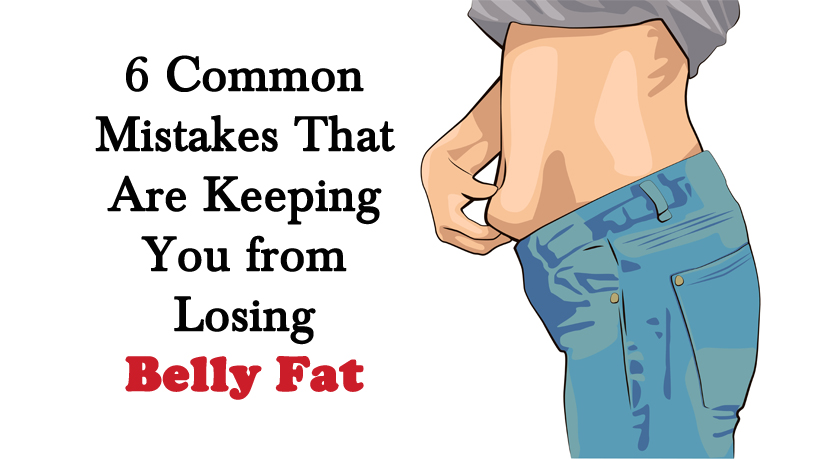Working out? Check. Eating healthy? Check. Weight loss? Well . . . that’s another story.
When you feel like you’re doing everything right, it can be frustrating if the excess belly fat just won’t budge. These behaviors are so common that we might not notice we’re doing them. Still, identifying one or more of these just might be the key to slipping back into your skinny jeans.
Not lifting weights
Many women who want the long, lean supermodel look skip the weights section and stick to the cardio machines. Women who fear they’ll bulk up if they lift weights will resign to being a “cardio bunny” at the gym . . . and probably not see as many results.
According to the International Sports Sciences Association, testosterone is responsible for making muscles appear bigger. Women generally don’t produce enough of this hormone to get big, bulging muscles.
In fact, lifting weights actually makes women look leaner. Strength training builds muscles that burn more calories throughout the day than a cardio session, according to a review on metabolic rates in the American Journal of Clinical Nutrition. So, if your doctor says it’s okay for you, don’t be afraid to pick up something heavier than a two-pound pink dumbbell.
Hitting an exercise plateau
Think about it: if you’re doing the same exercise every week, your body will eventually think it’s easy and not push so hard to do it. Your muscles and heart adapt to exercise. According to Ben Greenfield, the National Strength and Conditioning Association’s 2008 personal trainer of the year, when you’re not challenging your body you aren’t burning as many calories.
“Winging it” at the gym
Having a plan for your workout helps you use your time efficiently. If you do the exact same exercise every day, you might get bored. You also don’t want to work the same muscle group every day and risk getting injured.
Talk to your doctor and/or a physical trainer about the best schedule for your weight loss goals. In general, you should aim for 150-300 minutes of moderate activity a week and two days of strength training a week, according to the US government’s Physical Activity Guideline for Americans.
Cheating on your workout
Have you ever leaned on the treadmill’s handrails instead of walking or running with correct posture? What about doing bicep curls by swinging the dumbbell with momentum instead of isolating just your arm muscles? Not only can incorrect form be dangerous, it can hamper your progress toward your fitness goal.
If you don’t have a trainer or a professional watching your form, you can use online resources to educate yourself. Watch yourself in the mirror or prop up your phone to record a video of you doing an exercise. Then, watch a video online of the proper form and compare your performance. Notice anything you’re doing that looks different from the demonstrator.
Maintaining the same calorie count
When you were 50 pounds from your weight loss goal and you first started cutting calories, the weight probably started melting off easily. Now that you’re 25 pounds away, are you still eating the same number of calories?
This does NOT mean starving yourself to eat less during the day; this means choosing less calorically dense foods, like vegetables and lean meats.
Being dishonest about your diet
Some people keep food diaries of everything they eat but neglect to mention the donut that a coworker brought in, the extra cream and sugar in thei second coffee, or the one cookie they had while waiting for dinner to finish cooking. This isn’t to say you can never have a small treat again, but be honest with yourself about how much you’re snacking. A little bite here and there can really add up.
Sources:
https://www.mayoclinic.org/healthy-lifestyle/weight-loss/in-depth/weight-loss-plateau/art-20044615
https://www.webmd.com/fitness-exercise/features/have-you-hit-a-fitness-plateau#1
https://www.ncbi.nlm.nih.gov/pmc/articles/PMC2980962/
https://www.healthline.com/nutrition/cardio-vs-weights-for-weight-loss#section2
https://www.issaonline.edu/blog/index.cfm/2016/ladies-lifting-heavy-wont-make-you-bulk-up
https://www.ncbi.nlm.nih.gov/pmc/articles/PMC2980962/
https://health.gov/paguidelines/second-edition/10things/



